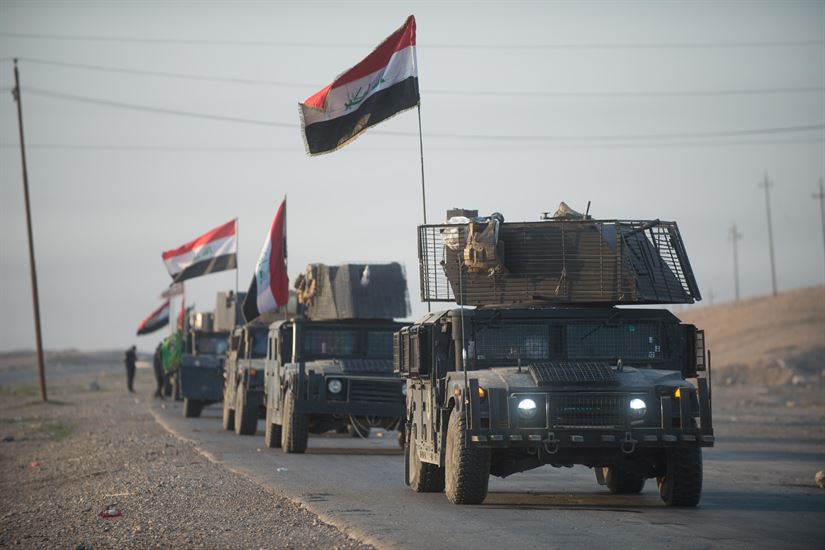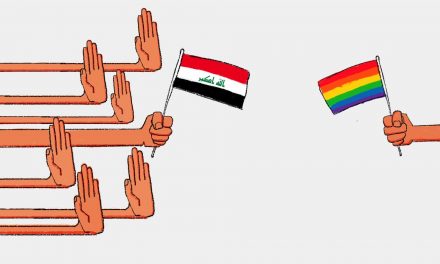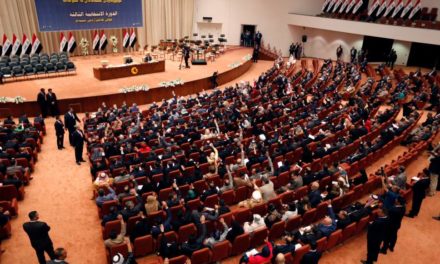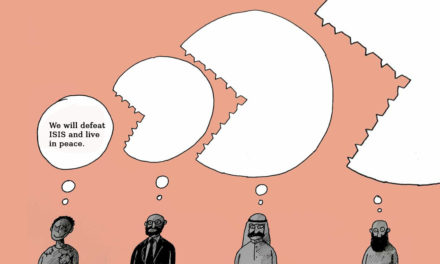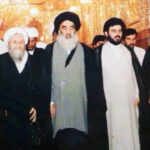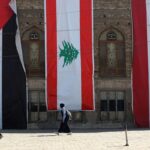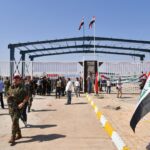There is a tragic irony in the fact that in many countries around the world, losing close to a hundred civilians to terrorism and armed conflict in a single month would be deeply troubling yet in Iraq, it is seen as part of a positive trend. That being said, it is hard not to receive the latest United Nations casualty figures for the month of May (at least 95 killed and 163 wounded) in a very favourable light. This outlook makes more sense when those numbers are compared to UN figures from May 2017 (354 killed, 470 wounded) and May 2016 (867 killed, 1,459 wounded). Iraq is currently experiencing its lowest levels of violence for nearly a decade, with security and intelligence forces working tirelessly to maintain this new status quo.
Da’ish does not seem desperate to confront Iraqi forces just yet, and have stuck to small-scale attacks across central and western Iraq. However, the Shu’la suicide bombing in northwestern Baghdad on the 24th of May spelled the first major terror attack in the capital since January and served as a deadly reminder that any security lapse can still have a deadly outcome. While it was initially reported that the suicide bomber, who detonated his vest after being cornered by security personnel near a public garden, only killed four civilians, hospital sources later reported that the figure could be as high as twelve.
Low levels of violence over the last few weeks should still be viewed as a major victory as Iraq witnessed its fifth election and the start of the holy month of Ramadhan, two events that have usually meant a certain degree of bloodshed. Salafist terror groups such as Da’ish and Al-Qaeda have historically ushered in the holy month with campaigns of violence and carnage against their enemies. Their inability to disrupt the elections in Iraq was a major sign of just how crippled the terror organization is. Apart from a failed assault against a military checkpoint in southwestern Kirkuk, election day passed in Iraq with relative calm, if we ignore the violent protests that took place in Sulaymaniyah hours after polling stations closed due to the forecasted victory of the Patriotic Union of Kurdistan.
More amusingly, Da’ish militants across the country seem to have found solace underground in Iraq. Over the last few months, Iraqi Security Forces have unearthed more than a hundred tunnel systems in various provinces that Da’ish once proudly claimed as part of their “caliphate”. Most of these networks were built as part of a contingency plan drawn up by Da’ish leadership during their occupation of the upper third of the country, as a mainstay of their fortifications against the Iraqi liberation offensives. They were built to give Da’ish the ability to circumvent Iraqi forces during battles and also allowed them to easily retreat once air support arrived. Iraqi troops during the liberation of Anbar, Salahuddin and Ninawa provinces regularly faced grueling assaults that seemed to come out of nowhere and end abruptly, with the assailants seemingly vanishing into thin air, as they scurried back down the tunnels.
Da’ish used civilians to build many of their tunnel systems across northern Iraq in preparation for the battle of Mosul, by either offering them a salary of $2 a day or forcing them to dig up to 10 metres of tunnel as punishment for offences such as smoking cigarettes.
Today, these tunnels serve as homes, command centres and staging areas for Da’ish militants still licking their wounds from the successive defeats they suffered over the last two and a half years. These tunnels have also become essential because Da’ish no longer controls any significant swathes of territory in Iraq that they can operate out of. Iraqi Security Forces have discovered dozens of tunnels in Ninawa province alone over the last couple of months in areas such as Hammam Al-‘Alil, Shura, Ba’aj, Hatra, Badush, Qayyarah and around the city of Mosul. On Saturday, Brigadier General Yahya Rasool announced that the Iraqi Army found seven separate tunnels in Zummar and other parts of the province.
Security forces in Mosul have even detained Da’ish members, including females who formerly worked for the group’s “religious police”, in tunnels underneath houses inside the city’s neighbourhoods. One such recent case involved a woman who was distributing money to Da’ish families still in the city while living in a tunnel under the Al-Intisar neighbourhood.
Such tunnels have also been regularly uncovered in Anbar and Salahuddin provinces, usually stocked with food, weapons, ammunition and living appliances. They have also been used in Kirkuk province, especially in areas such as Hawijah and Riyadh districts, to disrupt clearing operations by Iraqi forces needed in order to allow the safe return of tens of thousands of displaced families.
The underground withdrawal is part of a larger pattern that points to Da’ish trying to rebuild themselves as a competent threat by basically starting afresh as a complex network of terror cells living in isolation with the aim of slowly infiltrating back into the hearts of major Sunni populated areas. Hit-and-run attacks using motorcycles, a tactic made famous by the Taliban, have increased in Diyala and Salahuddin provinces and so has the rate of IEDs being placed alongside roads and paths in Anbar province. These asymmetrical tactics are all too familiar to Iraqis and security forces should expect a relentless low-level insurgency campaign to drag on throughout the summer, particularly in rural and desert regions in the country.
Recent rumours suggested that American troops were looking to build a military base in Sinjar in response to a growing threat in the area, including reports of more than two hundred Da’ish militants hiding out near Wardiyah. Digging deeper into these reports showed that a recent operation recently took place along the Syrian border near Sinjar, carried out by units from the 9th and 15th Divisions of the Iraqi Army, which resulted in the recapture of the villages of Um Jurays, Um Al-Thiban and Tal Safouk. Da’ish has regularly attacked Hashd Al-Sha’abi (PMUs) positions along this stretch of the border in cross-border attacks originating in Syria. After this successful operation, Ninawa Operations Commander Colonel Al-Jubouri said that he hoped these units and their American advisors would build a base on Mount Sinjar in order to protect the region. Only time will tell if these plans will actually unfold.
A series of offensives are badly needed to keep Iraqi boots on the neck of an exhausted Da’ish. The corridor running from Mosul to the Syrian border via Tal ‘Afar and Sinjar, the Himreen mountain range north of Tikrit, the expansive western Anbar desert and basically the entirety of Diyala province must be systematically swept through with considerable force and meticulousness in order to truly suffocate any hopes of a revival for Da’ish. The worry is that the complicated chess game unfolding in the corridors of power in Baghdad following an election that produced no clear winner will distract leadership from dealing the mortal blow to a debilitated foe.

Haidar Sumeri
Haidar Sumeri is a Middle East observer, mainly focusing on Iraq’s war on terrorism.

